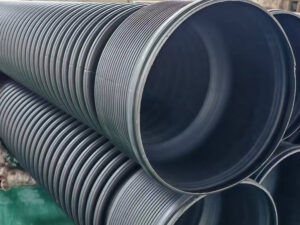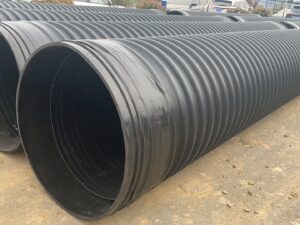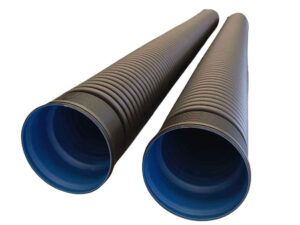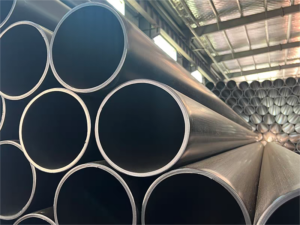PE Pipe
What Is PE Pipe
PE pipe is a thermoplastic pipe made of polvethylene as the main raw material by extrusion molding process. According to the density diference, PE is divided into high density polyethylene (HDPE),medum density polyethylene (MDPE) and low density polyethylene (LDPE), of which HDPE has become the mainstream material because of its high strength characteristic. With its advantages of corrosion resistance, flexibility and portabiity, PE pipes gradually replace traditional metal and concrete pipes and become the core transport carrier in municipal, industrial, agricultural and other fields.
Categories
PE Pipeline Model And Specification
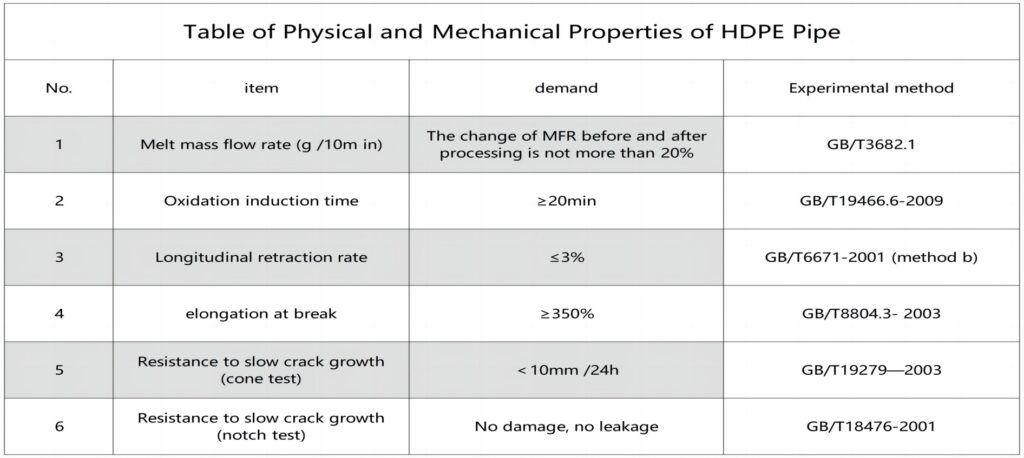
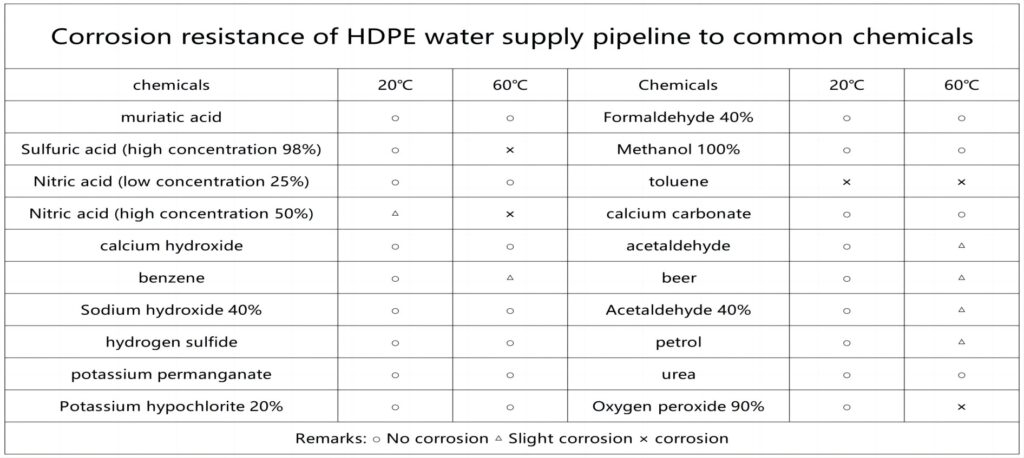
PE Pipeline Product Characteristics
Discover the Superior Features of High-Quality PE Pipe Fittings.When it comes to piping solutions, PE (Polyethylene) pipe fittings stand out as a reliable, durable, and eco-friendly choice. Crafted with precision and adhering to rigorous quality standards, these fittings are designed to meet the demands of modern infrastructure while ensuring safety, efficiency, and longevity. Here’s what makes PE pipe fittings the ideal solution for your projects:
Excellent corrosion resistance
It has excellent resistance to acid, alkali and corrosion, and is suitable for use in the chemical industry.
Low flow resistance
The inner wall of the pipe is smooth, its roughness coefficient is only 0.009, fluid resistance is small, effectively improving the hydraulic conditions of the pipe network, reducing the operating costs of the system.
Impact and water pressure resistance
The pipe has good pressure resistance, impact resistance and tensile strength properties.
Easy to install
Low density, easy handling, loading and unloading, construction, long service life, and therefore low overall cost.
Light weight and low price
Pipe connections are quick and easy to make, and construction costs are low.
Does not affect water quality
The dissolution test confirms that it does not affect the water quality, and is suitable for large-scale promotion and application.
Cost-Effective Construction
Designed for simplicity, PE pipe fittings are lightweight and easy to install, eliminating the need for heavy equipment like cranes or complex anchoring systems. Their straightforward installation process reduces construction time and costs significantly.
Long Service Life of Up to 50 Years
Manufactured with advanced materials, PE pipe fittings exhibit exceptional wear resistance and durability. Under standard pressure conditions, they can be safely used for over 50 years, providing a reliable and long-lasting solution for your piping needs.
Extreme Temperature Resilience
The fittings resist low-temperature brittleness (tested to -50°C) and thermal deformation, making them ideal for arctic climates and high-temperature industrial zones. Certified operational range: -30°C to 60°C with UV/chemical resistance.
Advanced Production Process and Connection Methods of PE Pipe Fittings.PE pipe fittings are engineered with precision and innovation to ensure superior quality, durability, and performance. Here’s an in-depth look at the production process and connection methods that make these fittings a top choice for modern piping systems:
1. State-of-the-Art Production Process
Our PE pipe fittings are manufactured using advanced technology to guarantee consistency, precision, and reliability. The production process includes: Single/Twin Screw Extruder: Ensures uniform material distribution and high-quality extrusion. Vacuum Sizing and Cooling System: Maintains precise control over pipe dimensions and roundness, delivering products that meet exact specifications. This meticulous process ensures that every PE pipe fitting is crafted to the highest standards, offering exceptional performance and longevity.
2. Reliable Connection Methods
PE pipe fittings are designed with versatile connection options to suit various application needs. The primary connection methods include: Hot Melt Butt Connection .The pipe ends are heated using a heating plate until they melt, then pressed under controlled pressure to form a seamless, robust joint. Creates a strong, leak-proof connection.Ideal for large-diameter pipelines due to its reliability and durability.Ensures uniform stress distribution across the joint, enhancing overall system integrity.
Application Of PE Pipelines
PE pipelines are widely used across various industries due to their durability, flexibility, and cost-effectiveness.
Municipal Engineering
Urban Water Supply (Blue Sign):
PE pipelines are used for transporting potable water in urban areas due to their non-toxic, corrosion-resistant properties.
Gas Transmission (Yellow Sign):
Ideal for low-pressure gas distribution networks, ensuring safe and leak-proof transportation of natural gas.
Drainage and Sewage Treatment:
Resistant to chemical corrosion, PE pipes are widely used in urban drainage systems and sewage treatment plants.
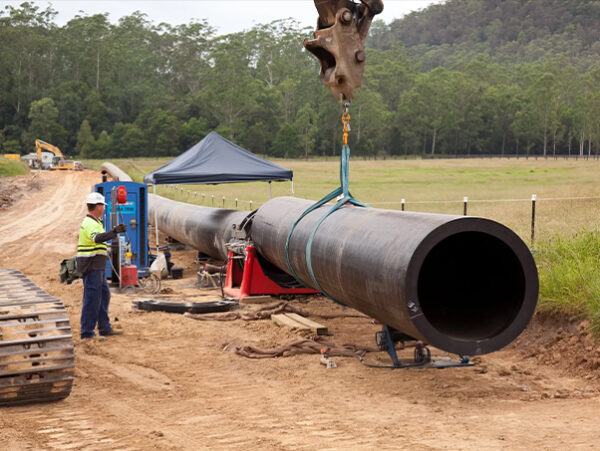
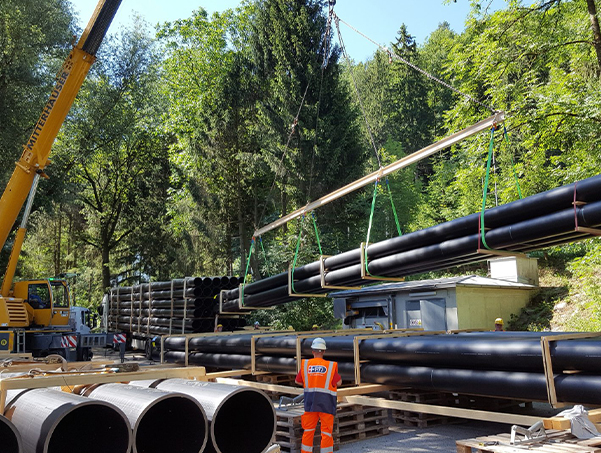
Landscaping Engineering
- Sprinkler Irrigation System:
PE pipes are used in landscaping projects for efficient water distribution in gardens, parks, and green spaces. - Drainage Pipe:
Used to manage excess water in landscaping areas, ensuring proper drainage and preventing waterlogging. - Weather Resistance for Long-Term Buried Use:
PE pipes are UV-resistant and durable, making them suitable for long-term buried applications in landscaping projects.
Farmland Irrigation
- Drip Irrigation/Sprinkler Irrigation System:
PE pipelines are lightweight, flexible, and resistant to UV radiation, making them ideal for agricultural irrigation systems. - Water Efficiency:
Ensures efficient water distribution, reducing water wastage and improving crop yield.
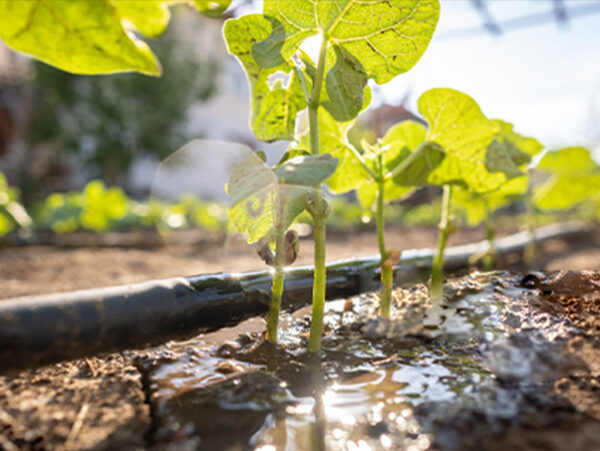
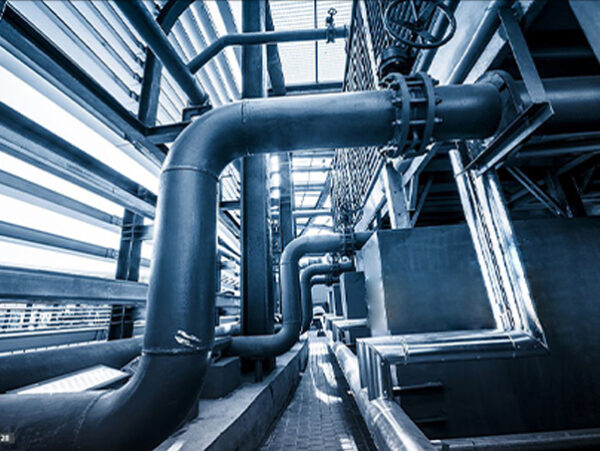
Industrial Scenarios
- Chemical Plant Corrosive Medium Transportation:
PE pipes are resistant to chemical corrosion, making them suitable for transporting corrosive fluids in chemical plants. - Durability in Harsh Environments:
Withstands harsh industrial conditions, ensuring reliable and long-lasting performance.
Urban Tap Water System
- Urban Water Supply:
PE pipelines are used for distributing clean, potable water in urban tap water systems. - Drainage and Sewage Treatment:
Ensures efficient wastewater management and sewage treatment in urban areas.

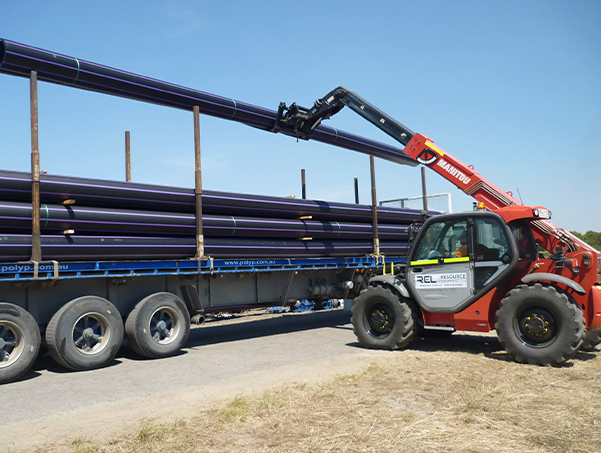
Road Construction Projects
Drainage Systems: Used for road rainwater and sewage discharge, offering corrosion resistance and excellent sealing, suitable for complex geological conditions.
Cable Protection: Acts as conduits for power and communication lines, providing moisture and pressure resistance while facilitating future maintenance.
Utility Tunnels: Applied in underground utility tunnels for water supply and reclaimed water pipelines, featuring flexibility and easy installation to minimize leakage risks.
How To Install PE Pipe
Procedure for Hot Melt Connection of PE PipesThe hot melt connection method is a reliable and efficient way to join PE pipes and fittings, ensuring a strong, leak-proof seal. Below is a step-by-step guide to the process:
Tools and Materials Required: PE pipe, PE elbow or fitting, Pipe clamps, Pipe scissors or electric saw, Heating plate, Welding machine, Measuring rod, Marker, Rubber mallet, and Pressure test tool.Step-by-Step Procedure
1. Measuring and Marking, Use a measuring rod and marker to measure and mark the precise location for the connection. Ensure the ground is level using a rubber mallet for stability during the process.
2. Reinforcing with Pipe Clamps. Secure the pipe clamp(s) to the ground using screws. Place the PE pipe into the clamp and gently press to secure it firmly. For larger pipes, use two pipe clamps spaced at an appropriate distance to ensure stability.
3. Cutting and Preparing the Pipe. Use pipe scissors or an electric saw to cut the PE pipe to the required length. Ensure the cut ends of the PE pipe and PE elbow are flat and smooth. Use a grinding tool if necessary to achieve a clean, even surface.
4. Heating, Place the heating plate between the end faces of the PE pipe and the PE elbow. Heat both surfaces simultaneously until the pipe wall becomes soft and pliable. Heating Time: Typically 30 seconds to 2 minutes, depending on the pipe diameter and ambient temperature.
5. Mounting and Connection. Remove the heating plate and immediately press the heated ends of the PE pipe and PE elbow together. Apply firm, even pressure to ensure a seamless connection. Hold the joint in place until it cools and solidifies. This step must be completed within the specified time to ensure a strong bond.
6. Testing.After the connection has cooled, use the pressure test tool provided by the system to perform a pressure test. Verify that the joint is leak-proof and the system functions properly. Key Considerations.Precision: Ensure accurate measurements and clean cuts for a proper fit.Timing: Complete the connection step immediately after heating to avoid premature cooling.Safety: Use appropriate protective gear, such as gloves and safety glasses, during the process.Advantages of Hot Melt Connection.Creates a strong, leak-proof joint.Ensures uniform stress distribution across the connection.Suitable for a wide range of pipe diameters and applications.By following this procedure, you can achieve a reliable and durable hot melt connection for PE pipes, ensuring optimal performance and longevity of your piping system.
PE Pipe Core Competitive Advantage
PE (Polyethylene) pipes are thermoplastic pipes manufactured through the extrusion molding process, using polyethylene as the primary raw material. Based on density differences, polyethylene is categorized into three main types: High-Density Polyethylene (HDPE), Medium-Density Polyethylene (MDPE), and Low-Density Polyethylene (LDPE)Among these, HDPE has emerged as the mainstream material for PE pipes due to its exceptional strength, durability, and performance characteristics.
PE pipes have gained widespread adoption across various industries, gradually replacing traditional metal and concrete pipes. Their key advantages include:Flexibility: The inherent flexibility of PE pipes allows them to withstand ground movement, seismic activity, and external pressures without cracking or breaking.Lightweight and Portable: PE pipes are significantly lighter than metal or concrete pipes, reducing transportation and installation costs while improving efficiency. Long Service Life: With excellent durability and resistance to wear and tear, PE pipes offer a long service life, minimizing maintenance and replacement costs.Leak-Proof Joints: PE pipes can be seamlessly joined using heat fusion, ensuring leak-proof connections and enhancing system reliability.Eco-Friendly: Made from recyclable materials, PE pipes are environmentally friendly and safe for potable water applications.
FAQ
What factors should be considered when selecting an HDPE pipe provider?
Decision-makers should evaluate product quality, certifications, and compliance with industry standards. Providers offering technical support, competitive pricing, and reliable delivery services ensure smooth project execution. Assessing customer reviews and past project performance also helps identify trustworthy suppliers.
Are HDPE pipes suitable for extreme environmental conditions?
Yes, HDPE pipes perform well in extreme conditions. Their flexibility and resistance to temperature fluctuations, UV exposure, and chemical corrosion make them ideal for harsh environments, including deserts, cold regions, and chemically aggressive areas.
How do HDPE pipes contribute to sustainability?
HDPE pipes reduce environmental impact through their lightweight design, which lowers transportation emissions. Their recyclability supports a circular economy, while their long lifespan minimizes waste. Additionally, they require less energy to produce compared to traditional materials.
Can HDPE pipes handle high-pressure applications?
Yes, HDPE pipes are designed to withstand high-pressure systems. Their high tensile strength and flexibility make them suitable for demanding applications, such as gas distribution, industrial piping, and water transmission in municipal projects.
What maintenance is required for HDPE pipes?
HDPE pipes require minimal maintenance due to their resistance to corrosion, abrasion, and biological growth. Routine inspections ensure system integrity. Their smooth interior prevents blockages, reducing the need for frequent cleaning or repairs.
Why Choose Us?
Jiangsu Jiangshan Plastic Technology Co., LTD. was established on April 12, 2006, located in Wuxi, Jiangsu, China. At present, the registered capital of the company is 10.08 million yuan. The company covers an area of 20,000 square meters, and has more than 160 employees, including 35 technical personnel. After nearly 20 years of rapid development, the company has become a professional production of all kinds of PE, PP-R pipes, and accessories for private enterprises. So far, the company has established business relations with Europe, the United States, Southeast Asia, the Middle East, Africa, and other regions, with a number of retailers and agents, well received by the industry and customers.
JIANGSHAN Plastics specializes in HDPE piping systems for drinking water, wastewater, and industrial applications. The company also offers converged equipment and field services to ensure seamless installation and maintenance. Its product portfolio includes pipes for agricultural irrigation systems, mining operations, and municipal infrastructure.
With the steady development of the company for nearly 20 years, your reliable partner new material quality national standard pipe, product quality makes you feel at ease source factory saves the middleman from earning the difference, and the high-cost performance makes you comfortable
Integrated solutions, including pipeline supply, converged equipment, and technical support, are the perfect service to you. Sufficient stock and fast delivery can solve your urgent needs. Product warranty 50 years, after-sales service
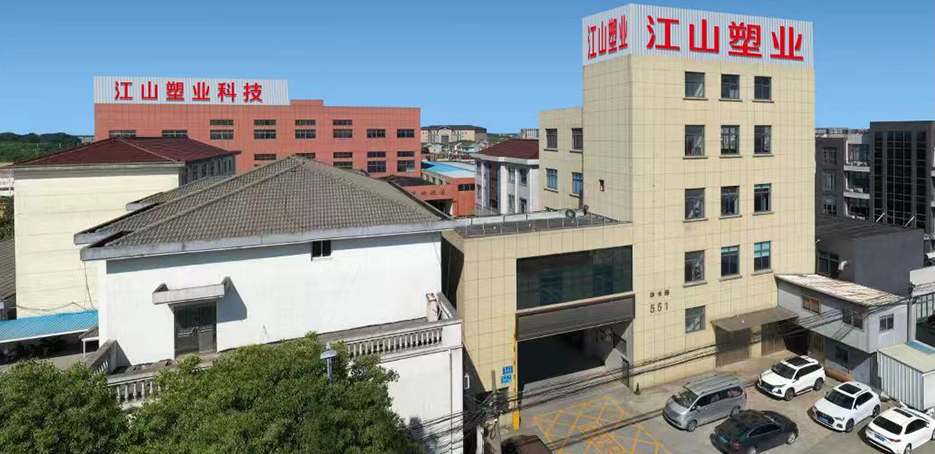

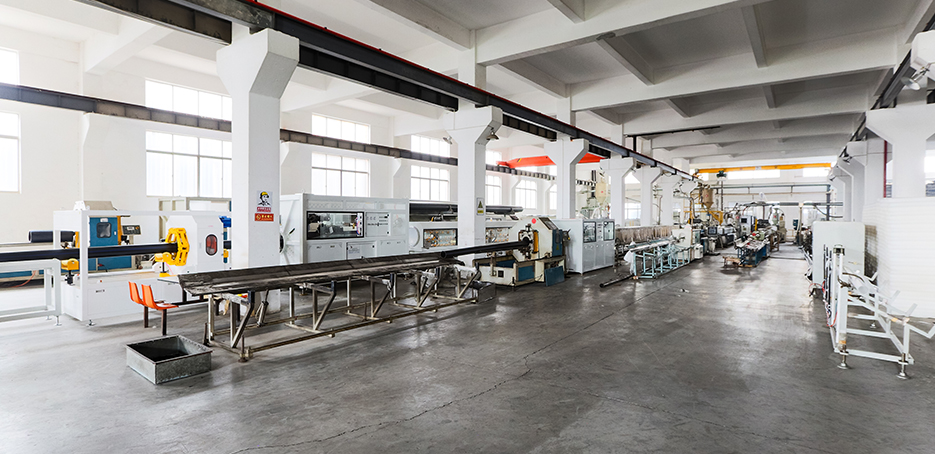

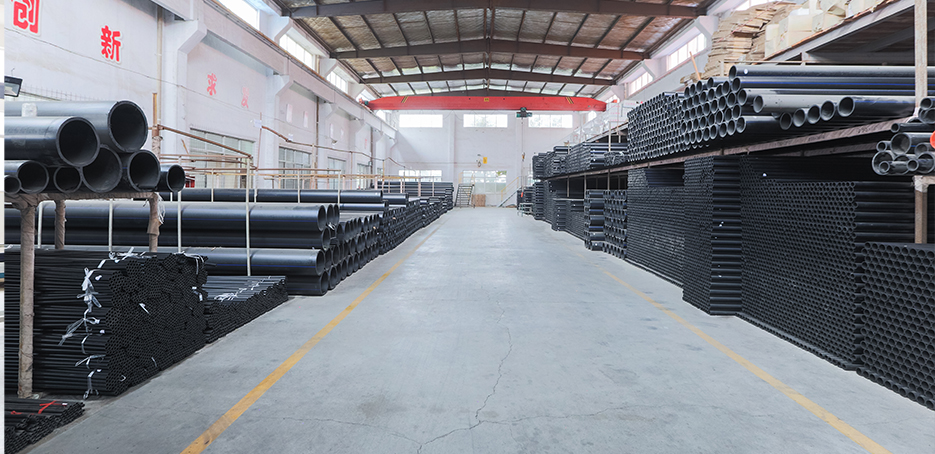


White-1-300x225.jpg)
